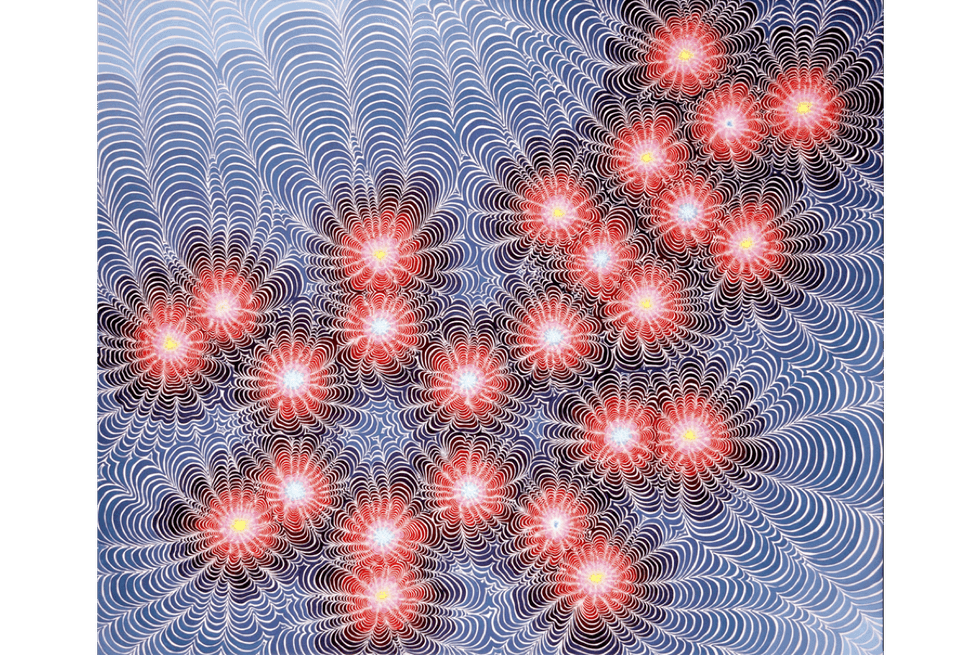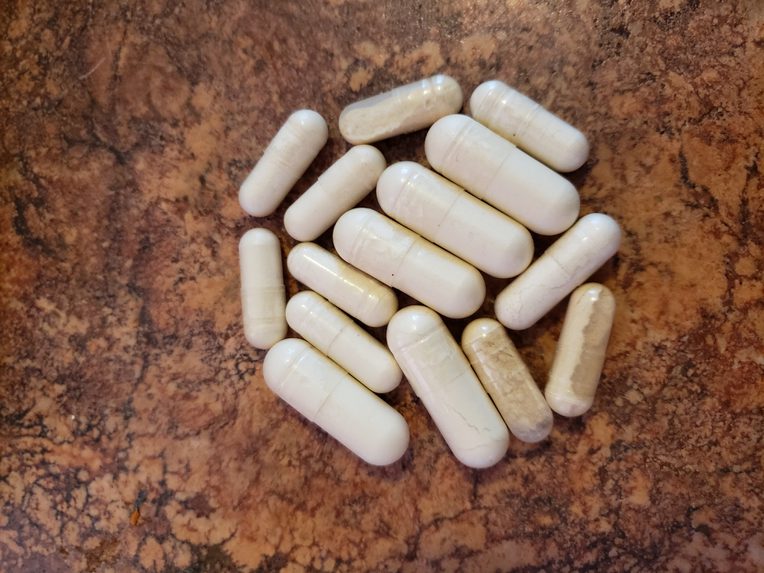Traveling for Treatment: Psychedelics and Addiction Care in Mexico
From the Series: The Psychedelic Revival
From the Series: The Psychedelic Revival

“When do we get our pills?” were the first words that Anthony said to me after he got in the car. I did not know the answer; I did not even know to what pills he was referring, so I leaned over the front seat and relayed his question to our driver, Manuel. Once the car stopped, Manuel took out to two pills from a small pill box and handed them to Anthony, who swallowed them without water. Manuel told me they were morphine pills; they would keep Anthony stable and not “suffer” by going into withdrawal from heroin and prescription opioids. Anthony sat back for a second and then, visibly anxious, got out of the car to smoke a cigarette, his first since he got on a plane six hours earlier in New Jersey. We were in the cell phone lot of the San Diego airport, waiting for two more flights to arrive, one from Toronto and one from Las Vegas. As each flight landed, we picked up another passenger until the car was full. We briefly introduced ourselves, Manuel gave one of the new arrivals their morphine pills, and then we hit the road.
Anthony and the other passengers, Bret and Lorraine, started chatting as we headed south on the I-5. They asked each other common “get to know you” questions (Where are you from? What do you do?) peppered with the not-so-common (What do you use? How long have you been using?). They all seemed eager but a bit unsure about what they signed themselves up for when they got on their flights. They asked Manuel about our destination, what the week will be like, and how others who had come before them had fared. He reassured them: “People leave feeling better. I see it all the time, week after week.” A half hour later, we reached the San Ysidro border crossing that separates San Diego County, California, from Tijuana, Baja California. Unlike the car and foot traffic coming the other direction, we breezed through border control with not so much as a car or passport check. As we passed through the checkpoint, Manuel greeted us, “Welcome to Mexico.”

When Manuel drove us across the border at San Ysidro, we were but a handful of the thousands of people that pass daily through the busiest land border in the Western Hemisphere. But, unlike most travelers who come to Baja to vacation, visit family, or return home after their workday in the United States, we came to Mexico to visit a drug treatment center. Anthony, Bret, and Lorraine are self-described “addicts” who left the United States (or in Lorraine’s case, Canada) to receive treatment with a substance called ibogaine.1 It is a naturally occurring psychoactive substance found in several plant species, although it is most associated with a shrub native to West Central Africa called Tabernanthe iboga. It is used for “addiction interruption,” as a way to reduce or eliminate cravings for opiates, alcohol, and other drugs. Anthony, Bret, and Lorraine traveled to Mexico because drug treatment centers have been established across the country to cater to a mainly U.S. clientele looking for ibogaine treatment. This is because ibogaine, which is a psychedelic substance, has been illegal in the United States since 1967 and currently resides in a legal “gray zone” in Mexico as an unregulated substance (neither legal or illegal).
Since 2015, I have conducted sixteen months of ethnographic research at ibogaine treatment centers in Baja California to learn about this treatment and the people who cross international borders—sometimes many—to receive it. I work with both staff and “clients” at two such centers as they go through a seven-day treatment program. Both centers’ protocols offer ibogaine in conjunction with another psychedelic called 5-methoxy-N,N-dimethyltryptamine (5-meO-DMT), which is found in high concentrations in the venom produced by the Sonoran Desert Toad or Colorado River Toad (Bufo alvarius) native to northern Mexico and the southwestern United States. Treatment providers see them as complementary medicines that are both effective in treating addiction. My research examines the intricacies of this alternative drug treatment modality as well as its appeal to the drug-addicted. By analyzing how and why people seek out and receive this treatment in a foreign country, my research also draws critical attention to what I argue is the often overlooked and understudied role of medical travel in the provision and pursuit of this psychedelic-based treatment.2

Ibogaine’s illegal status in the United States requires traveling internationally in order to access this form of drug treatment, a kind of “circumvention medical travel” (to modify a term from I. Glenn Cohen [2012]). The complexity of this kind of venture is compounded by the fact that undergoing drug treatment is generally very physically and emotionally taxing. Scholarship on medical travel has focused on patients primarily as consumers making market-based decisions (Kangas 2010), but this is insufficient for understanding psychedelic-based drug treatment. Among the complicated factors that bring people to Mexico’s ibogaine centers are dissatisfaction with mainstream treatment modalities, attraction to “alternative” medicine, and exhaustion of the available treatment options in the United States. The transnational medical journey to “get clean” is often characterized by pain, fear, uncertainty, and hope, corporeal and affective experiences that add another dimension to our understanding of medical travel.
With the therapeutic potential of psychedelics receiving increasing attention, it is important to take note of the role that psychedelic-based therapies play in serving addicted populations. But, while there is a current push to legalize or decriminalize psychedelics around the world, people continue to travel internationally to access them, especially for therapeutic reasons. This is something that we cannot ignore. It speaks to the addiction healthcare climate in which we live and how some people respond to it by engaging in cross-border travel. Greater attention, therefore, must be paid to how medical travel plays into accessing addiction care. This work must address not only how such travel shapes the kind of care that can be provided, but also what kind of care is not being provided back home and why.
1. Addiction is not a straightforward or self-explanatory term. Anthropologists and critical drug scholars have examined the concept’s variability across and within fields (Keane 2002; Raikhel and Garriott 2013; Fraser, Moore, and Keane 2014) as well as its shifting categorization (Garcia 2010; Vrecko 2010; Raikhel 2015). Despite its contestation, I nevertheless use addiction in this piece because it is the word that my participants employ to discuss the issues they are addressing through drug treatment.
2. I use the term medical travel here as an alternative to the more standard medical tourism. As many scholars have argued, the latter is an inadequate term to describe crossing borders for medical care because tourism connotes pleasure and leisure (Sobo 2009; Song 2010; Whittaker and Speier 2010). This language is problematic when describing the experiences of people who feel compelled to travel in order to seek the healthcare they need.
Cohen, I. Glenn. 2012. “Circumvention Tourism.” Cornell Law Review 97: 1309–98.
Fraser, Suzanne, David Moore, and Helen Keane. 2014. Habits: Remaking Addiction. Basingstoke, UK: Palgrave Macmillan.
Garcia, Angela. 2010. The Pastoral Clinic: Addiction and Dispossession along the Rio Grande. Berkeley: University of California Press.
Kangas, Beth. 2010. “Traveling for Medical Care in a Global World.” Medical Anthropology 29, no. 4: 344–62.
Keane, Helen. 2002. What’s Wrong with Addiction? New York: New York University Press.
Raikhel, Eugene. 2015. “From the Brain Disease Model to Ecologies of Addiction.” In Revisioning Psychiatry: Cultural Phenomenology, Critical Neuroscience, and Global Mental Health, edited by Laurence J. Kirmayer, Robert Lemelson, Constance A. Cummings, 375–99. Cambridge, UK: Cambridge University Press.
Raikhel, Eugene, and William Garriott, eds. 2013. Addiction Trajectories. Durham, N.C.: Duke University Press.
Sobo, Elisa J. 2009. “Medical Travel: What It Means, Why It Matters.” Medical Anthropology 28, no. 4: 326–35.
Song, Priscilla. 2010. “Biotech Pilgrims and the Transnational Quest for Stem Cell Cures.” Medical Anthropology 29, no. 4: 384–402.
Vrecko, Scott. 2010. “Birth of a Brain Disease: Science, the State, and Addiction Neuropolitics.” History of the Human Sciences 23, no. 4: 52–67.
Whittaker, Andrea, and Amy Speier. 2010. “‘Cycling Overseas’: Care, Commodification, and Stratification in Cross-Border Reproductive Travel.” Medical Anthropology 29, no. 4: 363–83.